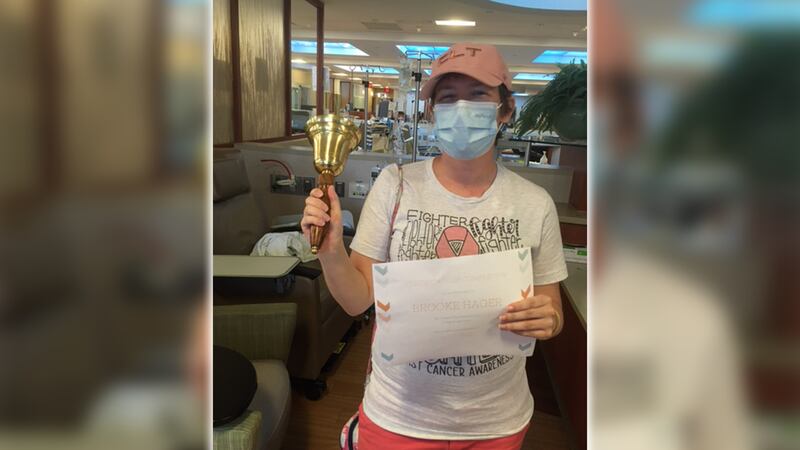CHARLOTTE — Jill Atkins and her daughter, Jaci, have always been close, but their bond is even stronger because of a battle they both faced.
“Like a double gut punch, and you know it’s hard but I can’t let my kids know how hard it is,” said Jill Atkins.
During the beginning of COVID in March of 2020, Jaci said she wanted to get her first mammogram, but she couldn’t because of strict hospital and medical guidelines during the pandemic.
“In those months everything was closed, unless you felt a lump, I didn’t. I didn’t have a mammogram until the following year,” said Jaci.
She said in 2021 after having her first mammogram, doctors called her back for a biopsy after discovering grape-like images on her scans. After a deeper investigation, doctors determined it was breast cancer. Miller’s doctor, Novant Health’s Medical Director of Surgical Oncology Dr. Peter Turk, says Jaci was diagnosed with a cancer found in 15 percent of women, called Lobular Cancer.
“What’s treacherous about them [is] they are sneaky, they don’t necessarily form the breast lump that you hear [about] when you have cancer,” said Turk.
So she opted for a double mastectomy, but that also included months of rigorous radiation and chemotherapy.
Weeks after Miller’s diagnosis, Jill learned that a lump she presumed was benign, kept growing. She learned after her mammogram that she, too, had breast cancer. She opted to have Dr. Turk perform a mastectomy on both breasts.
Jill says despite her diagnosis, her main focus was still making sure her daughter was OK.
“It was really strange, but it was more like I have to take care of her first. That’s the mom [in me], I guess,” said Jill.
Today, both women have a clean bill of health. Now, they want women to know the importance of getting a mammogram and having an advocate while going through treatments.
“Having cancer makes you automatically love a little deeper, and appreciate the small things a little more,” said Jill.
What is a mammogram, and how can it help?
Mammography can detect tumors that are too small to be felt during a physical exam. The goal of the procedure is to catch breast cancer or abnormalities before symptoms occur and/or the cancer has spread. Breast cancer that is detected in the earliest stages (while it is still confined to a small area) is more likely to have a successful treatment outcome.
The 5-year survival rate of breast cancer cases that are diagnosed at a localized stage -- meaning there’s no sign that the cancer has spread outside of the breast -- is 99%, according to the National Breast Cancer Foundation.
While mammograms are considered the gold standard for breast cancer screening, they aren’t perfect. The American Cancer Society says mammography may miss up to 20% of breast cancers, and there’s also the chance of false positive reports. About 10 percent of women who have a diagnostic mammogram end up needing a biopsy, according to the American College of Radiology.
Many well-known organizations, like the American Cancer Society, American College of Radiology, and Susan G. Komen, say they recommend that women 40 and older get mammograms every year.
There are more than 40 accredited facilities within 50 miles of Charlotte that offer mammography. To search for a mammography facility accredited by the American College of Radiology, click here.
VIDEO: Atrium program researches, supports younger breast cancer patients
©2023 Cox Media Group










